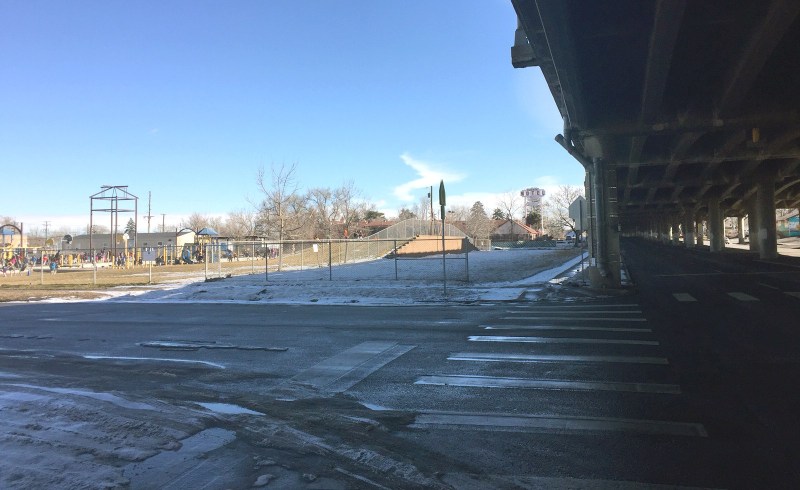Tell CDOT to Show Its Math on How Widening I-70 Affects Air Quality

Somehow, when the Colorado Department of Transportation redid its air quality analysis to justify ramming a wider I-70 through north Denver neighborhoods, it came out much less damning than before. Community advocates want to know how that can be.
Emissions of particulate matter — microscopic shards of pollution that get into people’s lungs and can cause bronchial and cardiovascular disease — is down 34 percent from the previous analysis, which entails measuring pollution at certain “hot spots.” The north Denver neighborhoods of Elyria, Swansea, and Globeville already suffer from high rates of asthma and heart disease, according to the Denver Department of Environmental Health. More cars and freight moving through their neighborhoods won’t help this problem.
The redo, which has so far delayed Federal Highway Administration approval for the $1.7 billion project, came after the public questioned CDOT air quality projections that extended through 2035. The new analysis, released just before the holidays, uses newer modeling from the Denver Regional Council of Governments that predicts emissions through 2040.
Denverite reporter Erica Meltzer wrote an excellent breakdown of the issue Friday. Reports Meltzer:
“The process is so corrupt that they come out with the exact number they need no matter what the standard is,” Yuhnke said in an interview. “They’re all over the map. They’re coming in 34 percent lower. It’s not marginal. A third of the entire project emissions disappeared. How can that be?”
If the previous estimates are the correct ones, he said, then the project is far out of compliance and residents will be exposed to high levels of pollution on a regular basis.
CDOT claims the proliferation of electric vehicles will make up for the extra traffic, according to Denverite. Even if that prediction proves correct, there’s still reason to question the agency’s findings:
Steve Cook, a transportation modeling and operations manager for DRCOG, said the 2040 Regional Transportation Plan does call for reduced levels of many pollutants, but PM10 levels aren’t actually coming down that much regionally. That’s because so much of PM10 comes from road dust, de-icing materials and other factors that won’t be affected by cleaner vehicles.
DRCOG’s 2040 plan incorporates the proposed I-70 widening and predicts the region as a whole will still be in compliance with federal air quality standards, but Cook said the DRCOG plans aren’t intended to be a project-level analysis.
The methodology section of the analysis says that CDOT used new traffic analysis from DRCOG and incorporated minor design changes in the highway, but it doesn’t provide details about how that changed the analysis.
CDOT provided materials to the Sierra Club on Friday, Meltzer reports, but the agency doesn’t see any reason to extend the comment period, which closes January 14. “There’s no way to properly digest, analyze, and comment on the new data in that amount of time,” Sierra Club Rocky Mountain Chapter Vice Chair Becky English told Streetsblog.
Advocates want the public to tell CDOT as much by commenting on the document before the Saturday deadline, and asking for more time.


